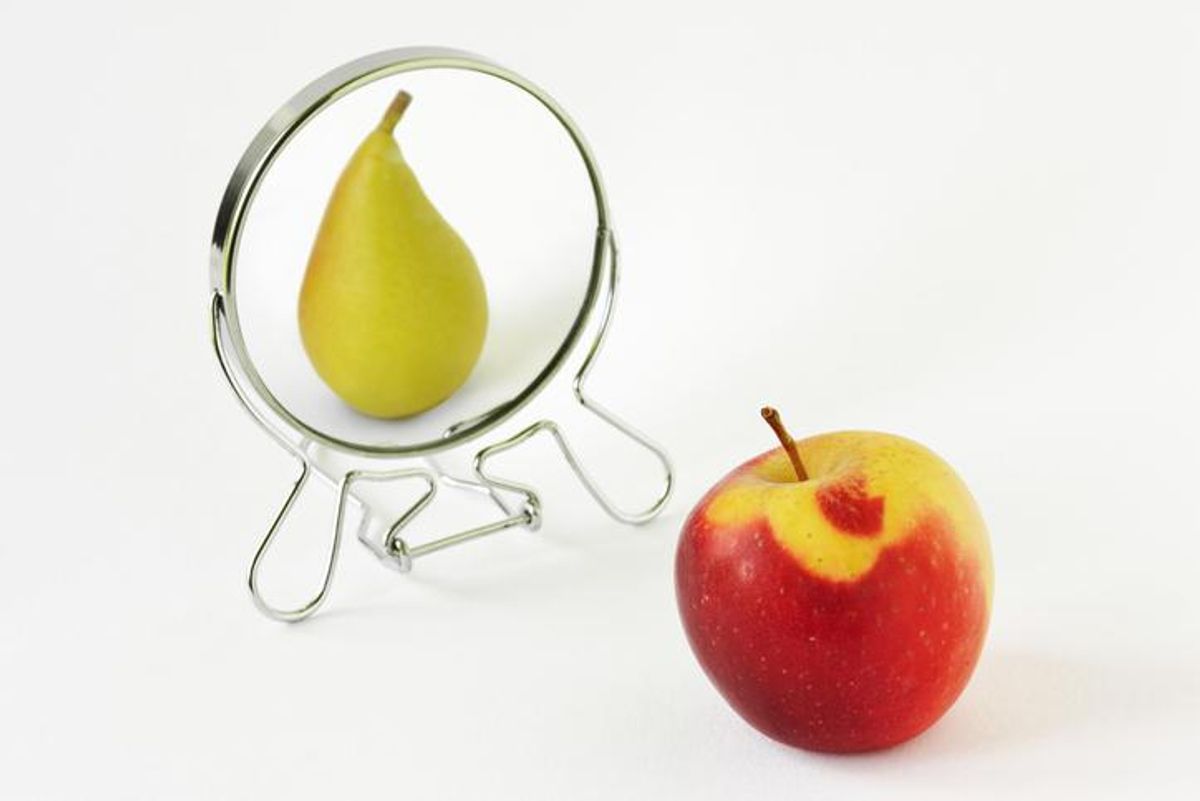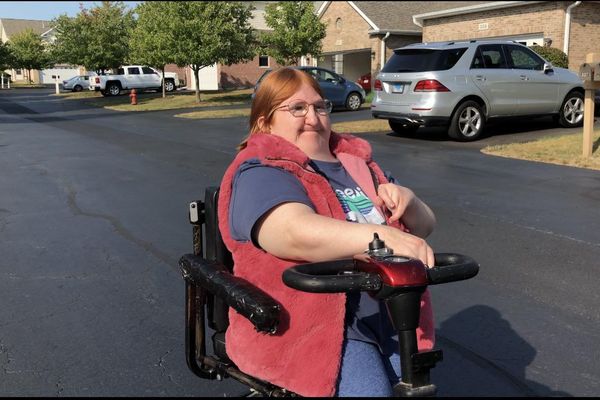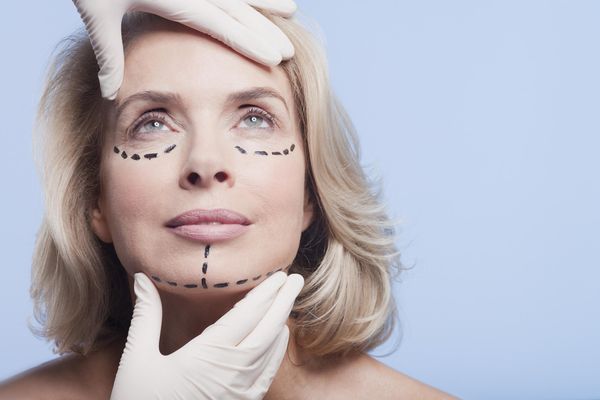It’s a sad fact of modern life that few women look in the mirror and like what they see. But it’s not surprising, given that we are constantly bombarded with images of idealized beauty. Those images are airbrushed and manipulated and don’t begin to represent what real women look like, but many of us still feel pressure to try to measure up.
For a small percentage of the population, that pressure, along with other factors, can lead to a condition known as body dysmorphic disorder (BDD), otherwise known as body dysmorphia.
Katharine Phillips, M.D., a leading psychiatrist in the BDD field and an author of numerous books on the subject, explained that BDD is a disorder that causes people to be preoccupied with the idea that they look abnormal in some way — that they look ugly, unattractive or deformed. They may even use strong words like “monster” to describe themselves or see themselves as “hideous,” when in reality, they look entirely normal.
“In BDD, you think you look horrible. You may go and put makeup on and then re-do it 10 minutes later, and then re-do it 15 minutes later because it's not the way you want it to be,” Phillips explained.
She added that many people with BDD are very attractive people, so they have a distorted body image, and the defects that they perceive in their appearance are actually nonexistent or only slight and nothing others would notice. “When you're talking with the person, they may point something out like, ‘Can't you see that my nostrils are uneven,’ or ‘I have a scar here.’ But in the eyes of everyone else, it looks really minimal and not anything they had noticed — and often others can't see this perceived defect at all.”
Most people have their moments of feeling unattractive or being self conscious about a pimple or some other slight imperfection. What signifies BDD is when the concern becomes obsessive and interferes with daily life.
“Generally, at least an hour a day people are thinking about this, and on average, it's more like three to eight hours a day. And then, in addition, the preoccupations trigger excessive repetitive behaviors, like excessive mirror checking or excessive grooming, or asking other people if you look okay, or picking at your skin if you think your skin looks abnormal or has blemishes on it,” Phillips said.
She added that appearance preoccupations must cause clinically significant distress — which can include a whole range of negative emotions, such as depression, anxiety, embarrassment, shame or feeling that life isn’t worth living — or impairments in functioning, such as avoiding social situations, not dating or missing classes, for example.
Technically, the criteria to diagnose BDD is that it causes significant distress or impairment in functioning, but it usually causes both, according to Phillips. She added that it’s important to note the severity of the disorder because BDD is increasingly confused in the media with more ordinary body image dissatisfaction, which is common among both men and women.
BDD, OCD & eating disorders
Though it has similarities with obsessive compulsive disorder (OCD) and eating disorders, BDD is classified as its own separate disorder. It affects roughly 1 in 50 people, mostly women. That’s approximately 2%-3% of the population, making it as common as bipolar disorder — yet, scientists know relatively little about the biology behind the disease, and only about 15% of those with BDD are diagnosed correctly.
BDD overlaps with OCD in numerous ways. Most importantly, both disorders are characterized by excessive preoccupations and obsessions that are difficult to resist or control. Phillips explained that, in both disorders, repetitive thoughts trigger compulsive behaviors, which are intended to reduce the distress caused by the thoughts.
The key difference, she said,, is that BDD focuses on perceived defects in appearance, whereas OCD can focus on numerous other kinds of obsessions. Another key difference is that people with BDD are more likely to think their belief is really true (I really am ugly); whereas, those with OCD may be afraid that if they don’t check the stove 30 times the house will burn down, but most don’t really believe the house will burn down.
Significantly, BDD is associated with more depression, suicidal thinking, suicide attempts and substance abuse than OCD.

iStock.com/AntonioGuillem
Although BDD is not an eating disorder, it does share some characteristics with eating disorders — both involve dissatisfaction with one’s appearance and body image and a distorted body image. However, anorexia nervosa and other eating disorders focus on body weight and on certain parts of the body being too fat.
Those concerns can be symptoms of BDD, but skin, hair and nose are the three most common concerns for people with BDD, according to Phillips.
“Sometimes in BDD, we'll see some dieting or some excessive exercise but not the more extreme eating behaviors that we'll see in eating disorders.”
Phillips said that a person can have both anorexia and BDD. Likewise, OCD and BDD often go together. And if a person has one, they may be more likely to develop the other.
One key and interesting similarity between BDD and anorexia nervosa is that both involve abnormalities in visual processing. The brains of people with both disorders show less activity in the areas that focus on the big picture and more activity in areas that focus on details.Risk factors
The kind of large (expensive) studies necessary to determine the exact causes of BDD have not been done, but the disorder is believed to be caused by a combination of environmental, psychological and biological factors.
Studies done on twins have revealed that BDD is about 40% to 50% genetically determined. Historic family trauma or dysfunction combined with other life experiences — such as being bullied or teased — and social media imagery, can create the perfect storm, especially with teens and young adults.
“Having a familial history of BDD or an eating disorder, struggling with preexisting depression or anxiety, having experienced trauma, and personality traits like perfectionism all make a person at higher risk for the disease,” said Carla Korn, a clinical therapist who specializes in eating disorders and body image therapy.
It’s believed that BDD can affect people across racial, ethnic and socioeconomic groups, but Phillips pointed out that there isn’t hard data on whether it’s more common in some groups than others or may affect them differently. She also noted that people with BDD tend to have less education and are more likely to be unemployed, but those could be results of BDD rather than risk factors.
Adjusting the mirror
The good news for the 5 million people affected is that BDD can be treated.
“With the right treatment, people who are struggling with BDD can absolutely go on to live full and healthy lives,” Korn said. “The most common therapy modalities used for BDD are cognitive behavioral therapy and dialectical behavioral therapy. Typically, a therapist working with someone who has BDD will try to help the client develop some at-home coping skills to turn to when they are struggling.”
Medications, in particular, selective serotonin reuptake inhibitors (SSRIs), are also an effective treatment. “These are potentially life-saving medications,” Phillips said. “They're not abused, they're not habit-forming, most people have no side effects.”
Phillips stressed that BDD is extremely difficult to diagnose, so it’s important to find a professional with experience with the disorder.
Resources:
Anxiety and Depression Association of America
SAMHSA Helpline — 1-800-662-HELP (4357) is a confidential, free information service, in English and Spanish, for individuals and family members facing mental and/or substance use disorders.
International OCD Foundation — BDD Page







